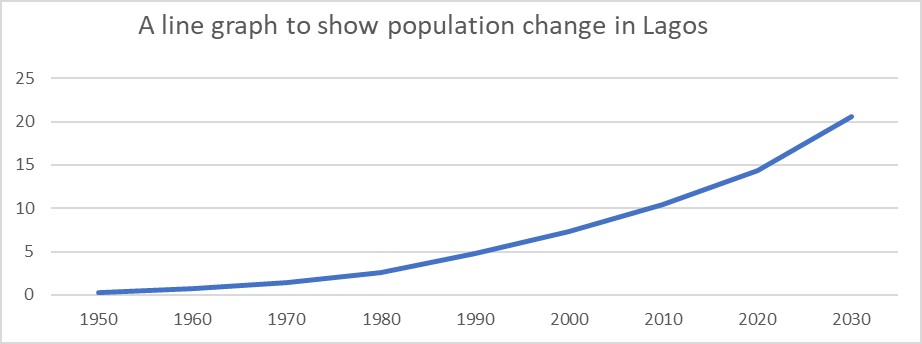Try this 15-question GCSE quiz to see how much you know about Lagos in Nigeria.
If you haven't already done it, work through the Lagos urban case study on the PowerPoint (especially the graph on page 12). Or look at it again to help fill any gaps in your knowledge!
HIGH SCORES
| Rank | Name | Score |
|---|---|---|
| 1st | OOF | 30 |
| 2nd | ALY | 30 |
| 3rd | Idk | 30 |
| 4th | Hel | 30 |
| 5th | dog | 30 |
| 6th | Mya | 30 |
| 7th | SUS | 30 |
| 8th | a13 | 30 |
| 9th | erf | 30 |
| 10th | LSF | 30 |
QUIZZES // Lagos urban case study quiz
Q1. Which of these countries does Nigeria not share a border with?
Liberia
Benin
Niger
Cameroon
Q2. What is the capital city of Nigeria?
Kano
Port Harcourt
Abuja
Lagos
Q3. Where is Lagos located in Nigeria?
Central Nigeria
Northern Nigeria
On the Niger Delta
At the western end of Nigeria’s Atlantic coast
Q4. Which of these is not a bridge connecting mainland Lagos to the islands?
Eko Atlantic
Eko
Carter
Third Mainland
Q5. When did Lagos officially become a megacity of 10 million people?
1960
1980
1990
2010
Q6. Where would you find the central business district of Lagos?
Eko Atlantic
Victoria Island
Lagos Island
Mainland
Q7. What is the difference between top-down and bottom-up management?
Top-down is action taken by local people, whereas bottom up is action taken by those in charge, such as the government
Top-down is action taken by those in charge, such as the government, whereas bottom-up is action taken by local people
Top-down is a form of management that requires cranes or helicopters, whereas bottom-up can be done from the ground surface
Top-down management is more expensive than bottom-up management
Q8. What is sustainable urban development?
Improving the urban areas by making sure that water and energy are not wasteful
Improving a rundown area so it attracts new businesses
When new trees are planted in a city
Improving life for residents now without destroying the opportunities and environment for later generations
Q9. Which of these is does not contain a squatter settlement in Lagos?
Ajegunle
Makoko
Maroko
Victoria Island
Q10. What is an NGO?
Non-governmental organisation
Non-giving organisation
Net gain organisation
National giving organisation

Q11. Study the graph on page 12 of the PowerPoint. Which of the following statements is true?
Between 1970 and 2020, the population of Lagos doubled
Between 1970 and 2020, the population of Lagos trebled
Between 1970 and 2020 the population of Lagos increased by 20 million people
Between 1970 and 2020, the population of Lagos increased by 11 million people

Q12. Study the graph again. Which of the following statements is true?
The population increased less in the 20 years from 2000 to 2020 than it did in the 20 years from 1950 to 1970
The population increased by the same amount in the 20 years from 2000 to 2020 as it did in the 20 years from 1950 to 1970
The population increased more in the 20 years from 2000 to 2020 than it did in the 20 years from 1950 to 1970
The population doubled from 1950 to 2020

Q13. Study the graph again. Which of the following is true?
Lagos became a megacity in 1990
Lagos became a megacity in 1950
Lagos became a megacity in 2010
Lagos became a megacity in 2020
Q14. Which of these is not a feature of the Makoko floating school?
Solar panel on the roof to generate electricity
Open space area for playing
Wind turbine on the roof
Floating platform base
Q15. Approximately how many of the 14 million Lagos inhabitants live in squatter settlements?
1.7 million
0.5 million
8.5 million
10.2 million
Finished!
You scored this time. The more correct answers you give, and the fewer incorrect answers you guess, the better your score.

